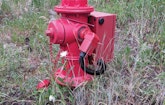
The mountainous terrain around Park City, Utah, requires the water utility to pump from 6,500 to as high as 9,500 feet above sea level.
Interested in Recovery/Reuse?
Get Recovery/Reuse articles, news and videos right in your inbox! Sign up now.
Recovery/Reuse + Get AlertsThe Park City (Utah) Public Utilities Department invested in leak detection in 2018 and 2019, and it is paying off in a big way: Payback time is projected at a year and a half.
The effort led to a 2019 Smart 50 Award from Smart Cities Connect, an organization that aims to accelerate the adoption of smart technology and help with problem-solving for the benefit of communities and their citizens. Last November the city received a Reach Award from Sensus, one of the three Xylem-brand companies whose equipment the city uses.
Tourist economy
Park City, in a ski resort area of Utah, is home to the Sundance Film Festival. It has about 8,500 year-round residents, but the department pegs its service population at 40,000, what with all the tourists and their vacation homes. The utility has two water treatment plants, three wells and a distribution system with 130 miles of pipe, 43 pressure zones, 16 pump stations, 19 water tanks and 52 pressure reducing stations to serve 5,500 connections. Average production is about 5 mgd, but peak summer production exceeds 12 mgd.
“It’s a complex utility because Park City is a mountainous area,” says Jason Christensen, water resource manager. “We serve a pretty wide elevation range. That’s one reason why we focused in on water loss. There is a lot of energy and carbon embedded in that water, because some of that water is moving from 6,500 to 9,500 feet above sea level.”
The city has set sustainability goals that include having all its buildings achieve net-zero energy by 2022 and the entire city at net zero by 2032. Leakage of water that has been treated and pumped up a mountain doesn’t fit well with that objective.
Insights from metering
The staff identified the general area of the leakage through district metering. “We have meters in strategic places so we can watch water flow through those metered points,” Christensen says.
The data shows how much water goes into the system and how much goes through customers’ meters; the difference typically represents leakage.
“The district meters let us know we had a problem in an area of town we call Upper Deer Valley,” Christensen says. “We couldn’t see any obvious problems, but the meters were telling us we were losing 300 to 400 gpm in that area.”
The first step was to hire Wachs Water Services (a Xylem company) to do an acoustic survey of the system, listening to valves and fire hydrants to detect leakage noise. “They found about 100 gpm in other areas of town but didn’t find anything in Upper Deer Valley,” Christensen says.
The team then looked for other leak detection technologies and settled on in-pipe detection from Visenti, also a Xylem company. Visenti installed 20 sensors in Upper Deer Valley, mostly on fire hydrants, to collect data and transmit it over a cellular network.
Eight failed service lines
“They told us there was a lot of noise in a specific area of the system, and the noise was consistent with a leak,” Christensen says. “We resurveyed that area and also listened to the individual water service lines. We found eight services that had failed. They were leaking 5 to 30 gpm into the ground.”
The service lines could have leaked for a long time without detection because the water wasn’t surfacing; it was just draining into the rocky soil. “We fixed those lines, and that reduced our water loss by an additional 200 gpm,” Christensen says. That brought total leakage prevented to 300 gpm, translating to $150,000 in annual savings on chemicals and pumping. The repairs cost $8,000 to $10,000 per service line, meaning a payback period of 1.5 years.
The effort continues because, as of last January, the staff had not pinpointed the other 100 gpm in leakage that district metering says is occurring in the Upper Deer Valley area. “We conclude that the remaining 100 gpm is probably in other service lines that have failed,” Christensen says. “That asset is at the end of its life, so we’ve started mass replacement of the remaining service lines there. We hope that gets us another 100 gpm.”
He doesn’t expect the same return on investment for that next 100 gpm, but he expects it still to be a worthwhile project.
Automated metering
Adding district metering to a system already in the ground can be complicated, but Park City continues to add them. The meters transmit data through an advanced metering infrastructure network with four Sensus radio towers, installed by the department in 2010. That network was built to make billing easier and to aid in earlier leak detection, but the city has taken advantage of the technology to add other instrumentation.
“We’ve had a full AMI deployment for a long time, but now we’re actually hooking up pressure transducers and flow measurement capability to that network,” Christensen says. “That allows us to insert district meters after the fact. We can use a battery-operated device so that cuts down on cost a lot, and we can transmit data over the AMI network. That’s one of the ways we’ve added meters on the back end.”
The data collected by Visenti provided additional information about pressure in the system, identifying areas that might be stressed, but so far no changes to pumps have been made as a result. “We were looking for leaks,” Christensen says. “That’s the white whale we were hunting, but Visenti did provide a lot of good data on how our system was performing and what pressure waves were moving through that network.”
On the path to net zero, the Water Division is doing much more to save energy. At its Quinn’s Junction Water Treatment Facility, it installed a 1.5-story solar wall and a huge ceiling fan to cut heating costs. Construction of a new net-zero water treatment plant will begin this year.
Fixing a few distribution network leaks may seem insignificant next to building a new plant, but when repairs pay for themselves in 18 months, that’s an award-winning project.







